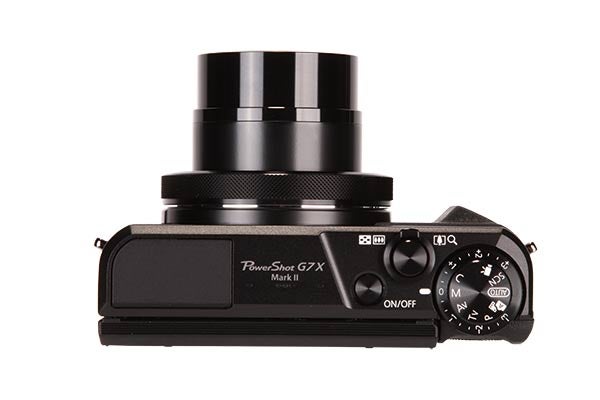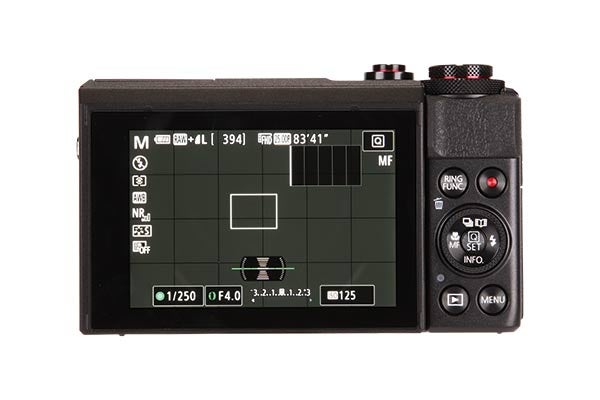With the PowerShot G7 X Mark II, Canon appears to have resolved the main issues of the model’s predecessor. Matt Golowczynski takes a closer look
Canon PowerShot G7 X Mark II review
Canon PowerShot G7 X Mark II review – Build and handling

The design of the previous model was clearly inspired by the minimal styling and pocket-friendly form of Canon’s discontinued PowerShot S-series models, and the Mark II doesn’t stray too far from this. Some of the G7 X’s rounded edges have been lost to more angular ones, and the main part of the body sees its mottled finish replaced by a smooth one, but the rear controls and top-plate are virtually unchanged in much of their design and most of the controls they access.
The camera is built very much to the standard we’ve come to expect from an enthusiast compact at around this price. The body is largely constructed from a sturdy metal, with plastic parts used at the base (where the NFC antenna is found) as well as for the battery/card door, control ring on the rear and flash. The stacked mode and exposure-compensation dials are made of milled metal, as is the control ring around the lens.

Outwardly, there are only two significant revisions from before, one being the aforementioned dual-hinged LCD and the other being the welcome addition of a small rubber grip on the front plate. The grip is small and only adds a little to the camera’s overall profile, but it doesn’t need to be any larger on such a body – and it’s pleasing to see it doesn’t have any impact on pocketability.
The exposure-compensation dial runs in reverse to the G7 X’s, so that a clockwise rotation applies negative compensation and vice versa. This is perhaps more natural for most people, and matches other brands too. Although the dial’s recession behind the rubber thumb rest means that it’s not quite as accessible as those on other cameras, it’s also not as prone to being inadvertently shifted out of position.

On the rear, the thumb rest has been made more substantial, although the difference is slight. Naturally on such a compact body, a 3in LCD doesn’t leave much room for physical controls, but the four buttons here are still well sized. Perhaps the most significant issue is with the change made to the LCD; the screen stands a little more proud of the body than the G7 X’s display, and this has affected how comfortably you can rotate the control ring next to it. Admittedly, this is an issue with many other cameras, too.




